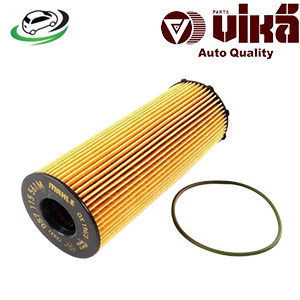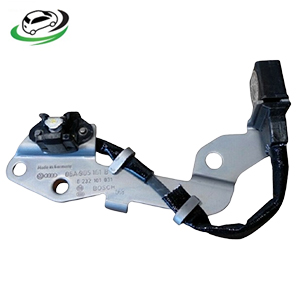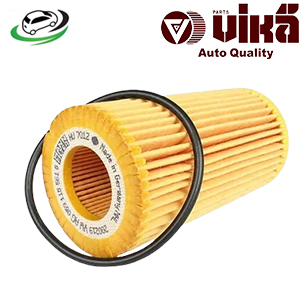Get Oil Filter Audi A6 C7 11-2018 / Audi Q7 4M 15-2020 / Audi Q5 FY/ VW Touareg CR 2019>/ Amarok 2H 2011> 059198405B
The oil filter is a critical component of an internal combustion engine’s lubrication system. Its primary purpose is to remove contaminants from engine oil, which, if left unfiltered, could lead to severe engine damage. Over time, engine oil picks up various impurities, including dirt, metal particles, and other debris, which can cause wear on the engine’s internal components. The oil filter traps these contaminants, ensuring that clean oil circulates through the engine, thus protecting and enhancing engine performance. In this comprehensive guide, we will explore the function, construction, types, benefits, common issues, and maintenance of the oil filter in detail.
Function of the Oil Filter
The oil filter plays several crucial roles in the engine’s operation:
- Contaminant Removal:
- Primary Function: The oil filter’s main function is to remove contaminants from the engine oil. These contaminants can include dirt, metal shavings, carbon particles, and sludge, which can form as a result of combustion and wear.
- Filtration Process: As oil flows through the filter, contaminants are trapped in the filter media, allowing only clean oil to pass through and lubricate the engine’s moving parts.
- Maintaining Oil Flow:
- Uninterrupted Lubrication: The oil filter ensures a steady flow of clean oil throughout the engine. This uninterrupted lubrication is vital for reducing friction and wear on engine components.
- Pressure Regulation: The oil filter helps maintain the correct oil pressure in the engine. If the filter is clogged or malfunctioning, it can cause a drop in oil pressure, leading to insufficient lubrication.
- Extending Engine Life:
- Protection Against Wear: By filtering out harmful particles, the oil filter protects the engine’s internal components from excessive wear and tear, thereby extending the engine’s lifespan.
- Optimizing Engine Performance:
- Enhanced Efficiency: Clean oil is essential for the efficient operation of the engine. The oil filter ensures that the oil remains free of contaminants, which helps improve engine performance and fuel efficiency.
Construction of the Oil Filter
The oil filter is a relatively simple but highly effective device. It consists of several key components that work together to filter the engine oil:
- Filter Media:
- Material: The filter media is typically made from cellulose, synthetic fibers, or a blend of both. Synthetic media are often preferred for their higher durability and filtration efficiency.
- Function: The media is the heart of the oil filter, where contaminants are trapped as oil flows through it. The design, material, and density of the media determine the filter’s efficiency in capturing particles.
- Canister or Housing:
- Material: The canister is usually made of metal or durable plastic. It is designed to withstand high pressure and temperature.
- Function: The canister encloses the filter media and provides a strong, leak-proof structure that holds the oil as it is filtered.
- Anti-Drainback Valve:
- Material: Typically made of rubber or silicone.
- Function: This valve prevents oil from draining out of the filter when the engine is turned off. It ensures that oil is available immediately upon engine startup, reducing wear during cold starts.
- Bypass Valve:
- Material: Usually metal or reinforced plastic.
- Function: The bypass valve allows unfiltered oil to flow through the engine if the filter becomes clogged or if the oil is too thick (e.g., during a cold start). This ensures that the engine continues to receive lubrication, even if the filter is compromised.
- Gasket:
- Material: Typically made from rubber or silicone.
- Function: The gasket seals the filter to the engine block, preventing oil leaks. A proper seal is crucial to ensure that all the oil passes through the filter rather than bypassing it.
- End Caps:
- Material: Usually metal or reinforced plastic.
- Function: The end caps secure the filter media within the canister, directing the flow of oil through the media.
Types of Oil Filters
Oil filters come in several types, each designed for specific applications and filtration needs:
- Spin-On Oil Filters:
- Design: This is the most common type of oil filter, featuring a metal canister with a threaded base that screws directly onto the engine.
- Application: Spin-on filters are widely used in most passenger cars and light trucks. They are easy to install and replace, making them a popular choice for do-it-yourself (DIY) enthusiasts.
- Cartridge Oil Filters:
- Design: Cartridge filters consist of a replaceable filter element (cartridge) that fits inside a permanent housing attached to the engine.
- Application: Commonly found in modern vehicles, especially those designed with environmental considerations in mind. Cartridge filters are easier to recycle than spin-on filters, as they contain less metal and are often encased in plastic.
- Magnetic Oil Filters:
- Design: These filters have a built-in magnet that attracts and holds ferrous metal particles in addition to the regular filter media.
- Application: Magnetic filters are often used in high-performance or heavy-duty engines where metal particles are a particular concern.
- High-Efficiency Oil Filters:
- Design: High-efficiency filters use advanced synthetic media for superior filtration, often capturing smaller particles than standard filters.
- Application: Ideal for high-performance vehicles or those that require extended oil change intervals.
- Thermal Chamber Oil Filters:
- Design: These filters include a thermal chamber that heats the oil to reduce its viscosity, allowing it to flow more freely and capture more contaminants.
- Application: Typically used in extreme cold environments where oil thickening can be a problem.
Benefits of a High-Quality Oil Filter
A well-designed and properly maintained oil filter offers several key benefits:
- Improved Engine Longevity:
- Reduced Wear: By effectively removing contaminants from the oil, the oil filter reduces the wear on critical engine components, such as bearings, camshafts, and pistons. This can significantly extend the life of the engine.
- Better Engine Performance:
- Optimized Lubrication: Clean oil ensures that the engine’s moving parts are properly lubricated, reducing friction and enhancing overall performance. This can lead to smoother operation and better acceleration.
- Lower Maintenance Costs:
- Preventative Care: By preventing contaminants from circulating through the engine, the oil filter helps avoid costly repairs due to wear and tear. Regularly replacing the oil filter is a cost-effective way to maintain engine health.
- Enhanced Fuel Efficiency:
- Efficient Operation: A clean engine runs more efficiently, which can lead to improved fuel economy. Contaminants in the oil can increase friction and reduce engine efficiency, leading to higher fuel consumption.
- Environmental Benefits:
- Reduced Emissions: Clean oil helps the engine burn fuel more efficiently, resulting in lower emissions. A well-functioning oil filter is part of a broader strategy to reduce a vehicle’s environmental impact.
Common Issues with Oil Filters
While oil filters are designed to be durable, they can encounter several problems that may affect their performance:
- Clogging:
- Cause: Over time, the filter media can become saturated with contaminants, reducing its effectiveness and restricting oil flow.
- Symptoms: A clogged filter can cause a drop in oil pressure, leading to poor lubrication and potential engine damage.
- Oil Leaks:
- Cause: Oil leaks can occur due to a damaged gasket, improper installation, or a cracked canister.
- Symptoms: Leaks can lead to low oil levels, which may cause engine overheating and damage due to insufficient lubrication.
- Bypass Valve Failure:
- Cause: If the bypass valve becomes stuck or fails, it can either allow unfiltered oil to circulate or restrict oil flow entirely.
- Symptoms: This can lead to increased engine wear or, in extreme cases, catastrophic engine failure due to oil starvation.
- Anti-Drainback Valve Failure:
- Cause: A faulty anti-drainback valve can allow oil to drain back into the oil pan when the engine is turned off.
- Symptoms: This can result in engine wear during cold starts, as the engine may be momentarily starved of oil.
- Incorrect Filter Use:
- Cause: Using the wrong type or size of oil filter can lead to improper filtration and reduced engine protection.
- Symptoms: This may result in poor engine performance, increased wear, and potential engine damage.
Maintenance of the Oil Filter
Proper maintenance of the oil filter is essential to ensure optimal engine performance and longevity:
- Regular Replacement:
- Intervals: Follow the vehicle manufacturer’s recommended oil change intervals, which typically include replacing the oil filter. This is usually every 3,000 to 7,500 miles, depending on the type of oil used and driving conditions.
- Signs of Wear: If the filter shows signs of damage, clogging, or leakage, replace it immediately, even if it hasn’t reached the recommended interval.
- Correct Installation:
- Proper Fit: Ensure the oil filter is correctly installed, with the gasket properly seated and the filter tightened to the manufacturer’s specifications.
- Lubrication: Apply a thin layer of clean oil to the gasket before installation to ensure a proper seal and prevent leaks.
- Using the Right Filter:
- Compatibility: Always use an oil filter that is compatible with your vehicle’s engine and meets the manufacturer’s specifications for filtration capacity and pressure.
- Inspect for Leaks:
- Visual Checks: After an oil change, inspect the oil filter and surrounding area for leaks. If any oil is present, recheck the installation and gasket condition.
- Monitor Oil Pressure:
- Gauge Reading: Keep an eye on the oil pressure gauge or warning light on your dashboard. A sudden drop in oil pressure could indicate a problem with the oil filter or the lubrication system.
Follow us on Facebook for more parts.



